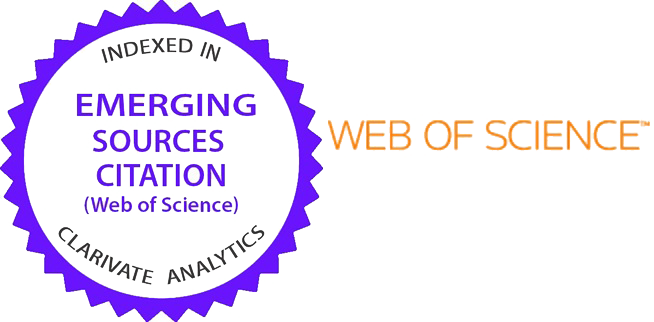Scalability and Cost Optimization in Load-Balanced Microservice Scheduling System
DOI:
https://doi.org/10.31436/iiumej.v26i2.3089Keywords:
Algorithm, Cloud-based, Container, Docker, Load balancing, MicroserviceAbstract
Microservice, a widely adopted architectural paradigm to overcome monolithic limitations, faces difficulties in efficient load balancing, scalability, and cost-effective deployment. To address these issues, we introduce a Container Microservice Load Balanced (CMLB) framework, which integrates the novel OEPTA algorithm. This framework aims to optimize microservice-based applications deployed on Docker within cloud environments. Common microservices scheduling strategies often grapple with load distribution challenges, resulting in suboptimal resource utilization. Concurrently, traditional containerization methods face difficulties reconciling trade-offs between scalability, deployment cost, and execution time. Our primary goal is to present a comprehensive solution that enhances the scalability, cost efficiency, and execution time of microservices deployment. This paper introduces a novel deployment framework for microservices, leveraging Docker for decentralized resource allocation across Microservice Controllers (MSCs). Additionally, a specialized algorithm is introduced to evaluate the cost, execution time, and availability aspects of microservice applications, enabling optimized resource allocation in a distributed manner. The evaluation results demonstrate that the CMLB framework, driven by the OEPTA algorithm, surpasses existing algorithms in achieving optimal scalability, cost efficiency, and execution times. This research provides a robust solution to enhance microservices deployment in cloud environments, effectively addressing key challenges in the field.
ABSTRAK: Mikroservis, sebuah paradigma seni bina yang diadaptasi secara meluas untuk mengatasi keterbatasan monolitik, menghadapi kesulitan dalam penyeimbangan beban yang cekap, skalabiliti, dan penyebaran kos efektif. Untuk mengatasi masalah ini, kami memperkenalkan rangka kerja Container Microservice Load Balanced (CMLB), yang mengintegrasikan algoritma OEPTA yang baru. Rangka kerja ini bertujuan untuk mengoptimumkan aplikasi berasaskan perkhidmatan mikroservis yang digunakan pada Docker dalam persekitaran awan. Strategi penjadualan mikroservis umumnya bergelut dengan cabaran pengagihan beban, yang menghasilkan penggunaan sumber daya yang kurang optimal. Pada masa yang sama, kaedah pengkontenaan tradisional menghadapi kesulitan dalam menyeimbangkan pertukaran antara skalabiliti, kos penggunaan, dan masa pelaksanaan. Matlamat utama kami adalah untuk membentangkan penyelesaian komprehensif yang meningkatkan skalabiliti, kos kecekapan, dan masa pelaksanaan dalam penggunaan mikroservis. Dalam makalah ini, kami memperkenalkan rangka kerja penggunaan yang baru untuk perkhidmatan mikroservis, dengan memanfaatkan Docker untuk peruntukan sumber terdesentralisasi merentas Pengawalan Perkhidmatan Mikroservis (MSCs). Selain itu, algoritma khusus diperkenalkan untuk menilai kos, masa pelaksanaan, dan ketersediaan aplikasi mikroservis, membolehkan peruntukan sumber dioptimumkan dalam cara yang diedarkan. Keputusan penilaian menunjukkan bahawa rangka kerja CMLB, didorong oleh algoritma OEPTA, mengatasi algoritma sedia ada dalam mencapai skalibiliti optimum, kecekapan kos, dan masa pelaksanaan. Penyelidikan ini memberikan penyelesaian yang teguh untuk meningkatkan penggunaan mikroservis dalam persekitaran awan, menangani cabaran utama dalam lapangan dengan berkesan.
Downloads
Metrics
References
O. Al-Debagy and P. Martinek, “A Comparative Review of Microservices and Monolithic Architectures,” 18th IEEE Int. Symp. Comput. Intell. Informatics, CINTI 2018 - Proc., pp. 149–154, 2018, doi: 10.1109/CINTI.2018.8928192.
L. De Lauretis, “From monolithic architecture to microservices architecture,” Proc. - 2019 IEEE 30th Int. Symp. Softw. Reliab. Eng. Work. ISSREW 2019, pp. 93–96, 2019, doi: 10.1109/ISSREW.2019.00050.
F. Ponce, G. Marquez, and H. Astudillo, “Migrating from monolithic architecture to microservices: A Rapid Review,” Proc. - Int. Conf. Chil. Comput. Sci. Soc. SCCC, vol. 2019-Novem, 2019, doi: 10.1109/SCCC49216.2019.8966423.
M. Villamizar, O. Garcés, H. Castro, M. Verano, L. Salamanca, and S. Gil, “Evaluating the Monolithic and the Microservice Architecture Pattern to Deploy Web Applications in the Cloud Evaluando el Patrón de Arquitectura Monolítica y de Micro Servicios Para Desplegar Aplicaciones en la Nube,” 10th Comput. Colomb. Conf., pp. 583–590, 2015.
T. Erl, J. Fontenla, M. Caeiro, and M. Llamas, “Web Services and Contemporary SOA,” Serv. A rch itectu re Connceptsts , Technol. , Des., pp. 25–81, 2005.
D. Bhamare, M. Samaka, A. Erbad, R. Jain, and L. Gupta, “Exploring microservices for enhancing internet QoS,” Trans. Emerg. Telecommun. Technol., vol. 29, no. 11, 2018, doi: 10.1002/ett.3445.
A. Sundberg, “A study on load balancing within microservices architecture,” 2019, [Online]. Available: https://www.mendeley.com/catalogue/a4814e2d-827e-3e18-93b5-3f91efa6d98b/?utm_source=desktop&utm_medium=1.19.4&utm_campaign=open_catalog&userDocumentId=%7B0ed39c18-97ea-4c9c-994a-2dd841333607%7D
J. A. Valdivia, X. Limon, and K. Cortes-Verdin, “Quality attributes in patterns related to microservice architecture: a Systematic Literature Review,” pp. 181–190, 2020, doi: 10.1109/conisoft.2019.00034.
Z. Ding, S. Wang, and M. Pan, “QoS-Constrained Service Selection for Networked Microservices,” IEEE Access, vol. 8, pp. 39285–39299, 2020, doi: 10.1109/ACCESS.2020.2974188.
M. Villamizar et al., “Cost comparison of running web applications in the cloud using monolithic, microservice, and AWS Lambda architectures,” Serv. Oriented Comput. Appl., vol. 11, no. 2, pp. 233–247, 2017, doi: 10.1007/s11761-017-0208-y.
N. Viennot, M. Lécuyer, J. Bell, R. Geambasu, and J. Nieh, “Synapse: A microservices architecture for heterogeneous-database web applications,” Proc. 10th Eur. Conf. Comput. Syst. EuroSys 2015, 2015, doi: 10.1145/2741948.2741975.
V. Singh and S. K. Peddoju, “Container-based microservice architecture for cloud applications,” Proceeding - IEEE Int. Conf. Comput. Commun. Autom. ICCCA 2017, vol. 2017-Janua, pp. 847–852, 2017, doi: 10.1109/CCAA.2017.8229914.
J. Mathenge, “Containers vs Microservices: What’s The Difference?,” Https://Www.Bmc.Com/Blogs/Containers-Vs-Microservices/, 2021.
C. Pahl, A. Brogi, J. Soldani, and P. Jamshidi, “Cloud container technologies: A state-of-the-art review,” IEEE Trans. Cloud Comput., vol. 7, no. 3, pp. 677–692, 2019, doi: 10.1109/TCC.2017.2702586.
E. Casalicchio and V. Perciballi, “Auto-Scaling of Containers: The Impact of Relative and Absolute Metrics,” Proc. - 2017 IEEE 2nd Int. Work. Found. Appl. Self* Syst. FAS*W 2017, pp. 207–214, 2017, doi: 10.1109/FAS-W.2017.149.
M. D. Cojocaru, A. Oprescu, and A. Uta, “Attributes assessing the quality of microservices automatically decomposed from monolithic applications,” Proc. - 2019 18th Int. Symp. Parallel Distrib. Comput. ISPDC 2019, no. June, pp. 84–93, 2019, doi: 10.1109/ISPDC.2019.00021.
S. N. Srirama, M. Adhikari, and S. Paul, “Application deployment using containers with auto-scaling for microservices in cloud environment,” J. Netw. Comput. Appl., vol. 160, no. August 2019, 2020, doi: 10.1016/j.jnca.2020.102629.
S. Jain and A. K. Saxena, “A survey of load balancing challenges in cloud environment,” Proc. 5th Int. Conf. Syst. Model. Adv. Res. Trends, SMART 2016, pp. 291–293, 2017, doi: 10.1109/SYSMART.2016.7894537.
X. Wan, X. Guan, T. Wang, G. Bai, and B. Choi, “Journal of Network and Computer Applications Application deployment using Microservice and Docker containers?: Framework and optimization,” vol. 119, no. December 2017, pp. 97–109, 2018.
M. Lin, J. Xi, W. Bai, and J. Wu, “Ant Colony Algorithm for Multi-Objective Optimization of Container-Based Microservice Scheduling in Cloud,” IEEE Access, vol. 7, pp. 83088–83100, 2019, doi: 10.1109/ACCESS.2019.2924414.
K. Li, G. Xu, G. Zhao, Y. Dong, and D. Wang, “Cloud task scheduling based on load balancing ant colony optimization,” Proc. - 2011 6th Annu. ChinaGrid Conf. ChinaGrid 2011, pp. 3–9, 2011, doi: 10.1109/ChinaGrid.2011.17.
X. Guan, X. Wan, B. Choi, S. Song, and J. Zhu, “Application Oriented Dynamic Resource Allocation for Data Centers Using Docker Containers,” vol. 1, no. c, pp. 1–4, 2016, doi: 10.1109/LCOMM.2016.2644658.
A. Balalaie, A. Heydarnoori, and P. Jamshidi, “Migrating to Cloud-Native architectures using microservices: An experience report,” Commun. Comput. Inf. Sci., vol. 567, pp. 201–215, 2016, doi: 10.1007/978-3-319-33313-7_15.
M. Bravetti, S. Giallorenzo, J. Mauro, I. Talevi, and G. Zavattaro, Optimal and automated deployment for microservices, vol. 11424 LNCS. Springer International Publishing, 2019. doi: 10.1007/978-3-030-16722-6_21.
P. Stefanic, M. Cigale, A. Jones, and V. Stankovski, “Quality of Service Models for Microservices and Their Integration into the SWITCH IDE,” Proc. - 2017 IEEE 2nd Int. Work. Found. Appl. Self* Syst. FAS*W 2017, no. September, pp. 215–218, 2017, doi: 10.1109/FAS-W.2017.150.
B. Stevant, J. L. Pazat, and A. Blanc, “Optimizing the Performance of a Microservice-Based Application Deployed on User-Provided Devices,” Proc. - 17th Int. Symp. Parallel Distrib. Comput. ISPDC 2018, pp. 133–140, 2018, doi: 10.1109/ISPDC2018.2018.00027.
T. Tupid, “Basic Guide: Load Balancing and Auto-Scaling in Cloud Computing,” 2019. https://medium.com/@tudip/basic-guide-load-balancing-and-auto-scaling-in-cloud-computing-219a5f0768a
Z. Ni, C. Wei, T. Wood, and N. Choi, “A SmartNIC-based Load Balancing and Auto Scaling Framework for Middlebox Edge Server,” pp. 21–27, 2022, doi: 10.1109/nfv-sdn53031.2021.9665167.
I. Lera and C. Juiz, “Genetic Algorithm for Multi-Objective Optimization of Container Allocation in Cloud Architecture,” 2017.
D. A. Shafiq, N. Z. Jhanjhi, and A. Abdullah, “Load balancing techniques in cloud computing environment: A review,” J. King Saud Univ. - Comput. Inf. Sci., vol. 34, no. 7, pp. 3910–3933, 2022, doi: 10.1016/j.jksuci.2021.02.007.
Downloads
Published
How to Cite
Issue
Section
License
Copyright (c) 2025 IIUM Press

This work is licensed under a Creative Commons Attribution-NonCommercial 4.0 International License.






















